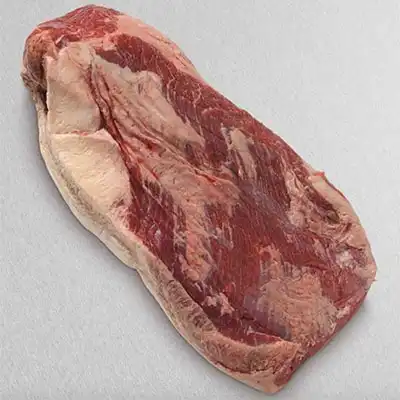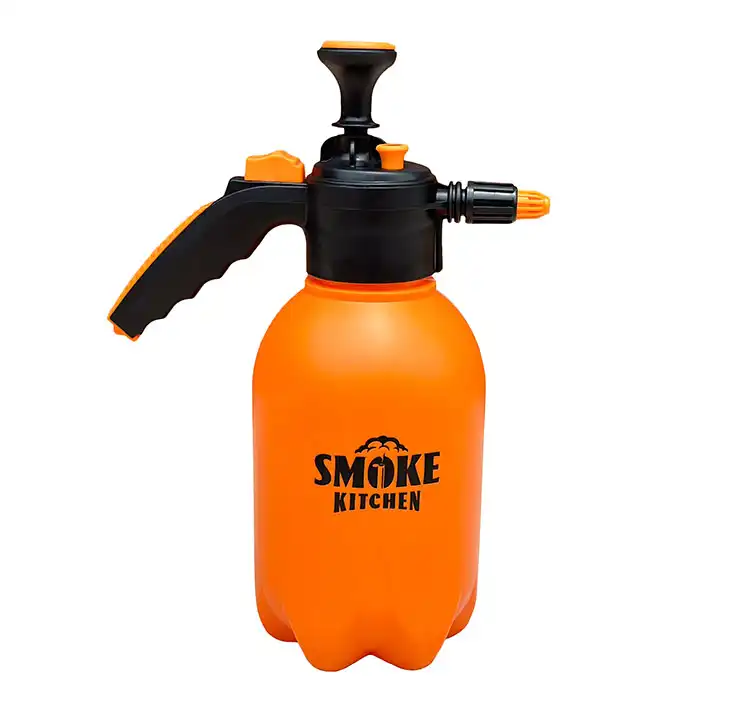The Best Brisket Burnt Ends That Melt In Your Mouth

We all know brisket is the king of BBQ. There’s just something special about having a big piece of beef smoking for hours for everyone to enjoy.
If you’ve never had brisket burnt ends this recipe is a must-try! These fluffy beef pillows are literal meat candy. Tender, fatty, beefy with all the bark and they just melt in your mouth.
Burnt ends are also way more forgiving than smoking a whole brisket, making them an excellent choice for a party.
What are burnt ends?
Burnt ends are super tender and tasty cubes of meat cut from the fattier point end of a brisket.

Traditionally part of Kansas City-style barbecue, burnt ends were originally an afterthought. The crispy ends were sliced off the brisket, sauced, and then served.
Nowadays, burnt ends are a staple on bbq restaurant menus across the country. The technique has also been applied to other meats. It’s common to see other cuts used like on our poor man’s burnt ends, or even different proteins like pork belly burnt ends, salmon burnt ends, and even hotdog burnt ends!
What part of the brisket is used for burnt ends
Some people smoke the brisket whole and then separate the point from the flat when making burnt ends, but I prefer to separate the two muscles beforehand.
For burnt ends, you only need to use the point which is the fattier, more tender side.
Some stores will sell you a point separately which can be a good option if you only want to make burnt ends.
If you can’t find it, you can always buy the whole packer brisket and separate it yourself.

Separating the point beforehand allows you to season the entire piece giving you a much better bark.
To separate the point, locate the deckle, which is the fat line near the end of the point. You will make a diagonal cut and follow the line of fat until the pieces are separated. Make sure you have a sharp knife on hand, and take your time.
You can either season the brisket flat separately and cook it alongside the point or save it for pastrami or corned beef.
Selecting a brisket
When selecting a brisket for burnt ends, I usually opt for a prime grade. The extra marbling in the prime cut will make it more tender and tasty. The prime grade isn’t much more expensive than a choice.
When choosing which brisket to buy you should inspect it to see how much fat or marbling it has. Just because the meat is graded prime does not mean they are all the same.

One tip for choosing a brisket is to use the bend test. Pick up a few briskets and try to bend them in half or grab one end and wiggle them up and down.
If the brisket feels too stiff there probably isn’t enough fat running through the meat.
Select the brisket that has more give or bend to it. That’s going to be the winner in tenderness and you’ll thank me later.
You can also save money and make poor man’s burnt ends which use more affordable chuck roast.
Trimming a brisket for burnt ends
Trimming a brisket can be intimidating to some people since it’s such a large cut of meat.
Whether I’m cooking a whole brisket or making burnt ends my process for trimming is the same. I usually freeze my brisket for about 2 hours before trimming. This really helps to get precise cuts and makes it much easier to trim.
I then remove all the fat on top of the brisket and leave a quarter inch on the bottom. If there is any hard fat, especially on the point, I remove that as well. I also round off the edges of the brisket so it is more “aerodynamic” as Aaron Franklin would say.
How to make brisket burnt ends
Making brisket burnt ends requires some prep work and patience, but the payoff is worth it!
1. Separate the point from the flat
The first thing you will do is separate the point from the flat.
To do this, run a sharp knife along the deckle (the fat line separating the two muscles) and slowly cut the two apart.

2. Season the brisket
From here you are going to season your point with kosher salt, coarse black pepper, and granulated garlic powder. Notice I’m using all coarse seasoning here because it will help get you that nice crusty bark we all love.
You could also use our homemade brisket rub and get great results.

I like to season my brisket overnight. Because it’s such a big cut of meat, seasoning it overnight helps everything to penetrate the meat and add additional flavor and salt.
Once the brisket nice nicely seasoned, plate it in a foil pan, cover it, and then place it into the fridge.
This is optional but does help enhance the flavor.
3. Set up your smoker to 250°F
Any time you are cooking brisket, make sure you plan ahead and leave yourself enough time.
I can’t tell you how many times I had to rush because I didn’t plan accordingly. A good rule of thumb for me is an hour per pound plus time to rest which is crucial but since we are making burnt ends the resting time is much shorter.
For this cook, I used my Pit Boss Pro 1600 and set it to 250°F.
Some guys smoke at 225°F but I tend to smoke at a little higher temperature because I really think it helps get a better bark. Plus if I can save a little time without compromising results, why not?
4. Smoke the brisket
For the first 2 hours, your brisket is smoking, there is no need to do anything with it.
After the second hour, I usually spritz with water and then start checking it every 45 minutes to an hour spritzing if the brisket looks dry.
Keep your barbecue nice and moist with this 68 OZ pressurized spritz bottle.
- Control spray from a fine mist to a solid stream
The spritzing will help keep the brisket moist, develop a better smoke ring and also help with the bark development. All good things!

After the brisket has reached 165°F and the bark is set, wrap it with foil or pink butcher paper and add your beef broth. Place it back on your smoker until the internal temperature of the brisket hits 195°F.
Pull your brisket off the smoker and take it out of the foil. Cut the point into 1-inch cubes and cover in bbq sauce and brown sugar. I think Blues Hog Original is perfect for these, or you can use our own homemade bbq sauce recipe.
Once the brisket cubes or ‘burnt ends’ are covered in the sauce, place them back in a pan or tray uncovered for another hour until the internal temperature reaches between 205°F-210°F.
Normally I wouldn’t take a brisket this far if I was slicing it, but it’s what you want for burnt ends.
At this point, you are done. No need to rest the brisket burnt ends for too long; wait until they cool off and enjoy these bites of pure heaven.
You can enjoy brunt ends with any sides you would serve with brisket.
Brisket Burnt Ends Recipe

Brisket Burnt Ends
Equipment
Ingredients
- 5 lbs brisket point
- ¼ cup kosher salt
- ¼ cup coarse black pepper
- 2 tbsp granulated garlic
- ½ cup beef stock
- ½ cup BBQ sauce
- ¼ cup brown sugar
Instructions
- If you have a whole brisket, separate the point from the flat end and save the flat.
- Season the brisket point with salt, pepper and garlic, place in a foil pan, cover and refrigerate overnight or for a few hours.
- Heat your smoker up to 250°F and smoke your brisket point until the internal temperature reaches 165 degrees.
- After two hours, spritz brisket with water if it looks dry every 45 minutes to an hour.
- Wrap your brisket with foil or butcher paper along with beef stock and place back on the smoker until it reaches an internal temperature of 195°F.
- Remove the brisket from the smoker and uncover.
- Cube up your brisket into 1×1 squares and mix with BBQ sauce and brown sugar and then back into the smoker uncovered for another hour until the internal temperature reaches 205°F.
Nutrition
Nutrition information is automatically calculated and should be used as an approximation only. If you’re worried you could always add a side of kale.
















